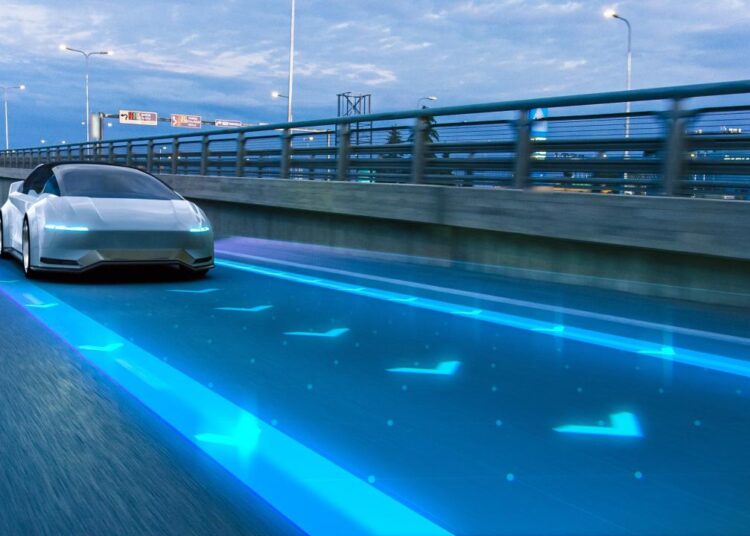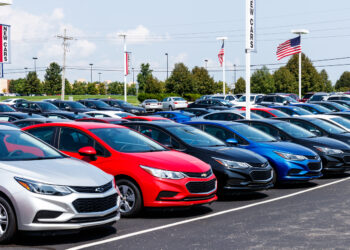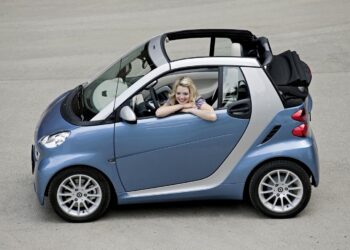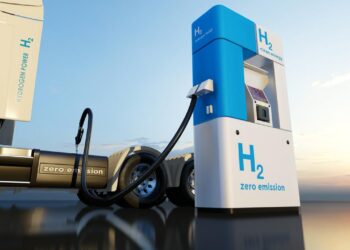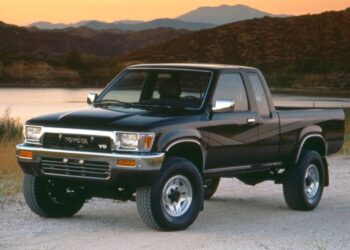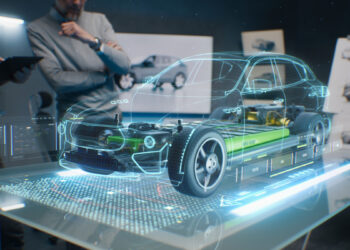The Forces Shaping Future Driving

The dramatic evolution in driving experiences isn’t arbitrary; it’s a direct response to, and often a leading indicator of, broader societal, technological, and environmental imperatives. Understanding these forces is crucial to appreciating the depth and breadth of the coming transformation.
A. The Electrification Revolution
The undeniable shift from internal combustion engines (ICE) to electric powertrains is the most foundational change influencing future driving experiences.
- Silent Power Delivery: The immediate and profound quietness of electric vehicles (EVs) fundamentally alters the sensory experience of driving. The absence of engine noise and vibration allows for a more serene and refined cabin, enhancing comfort and allowing other in-car features to shine.
- Instantaneous Torque and Smooth Acceleration: Electric motors deliver maximum torque from a standstill, providing instant, exhilarating acceleration without the need for gear changes. This creates a seamless, linear power delivery that is both thrilling and incredibly smooth, redefining the sensation of speed.
- New Design Freedom: Without the constraints of a large engine block, transmission tunnel, and exhaust system, designers have unprecedented freedom to reimagine vehicle interiors. This allows for flat floors, more spacious cabins, and flexible seating configurations, turning the car into a more versatile living or working space.
- Reduced Vibrations: Electric powertrains significantly reduce mechanical vibrations felt in the cabin, contributing to a more comfortable and less fatiguing ride, especially on long journeys.
- Bi-directional Energy Flow: Future EVs will not only consume electricity but also act as mobile energy storage units, potentially feeding power back to homes or the grid (Vehicle-to-Grid – V2G), making the car an active participant in sustainable energy management.
- Thermal Management Innovations: The efficient thermal management of batteries and electric motors, crucial for performance and longevity, leads to sophisticated heating and cooling systems that benefit cabin climate control.
Electrification is profoundly changing the auditory, tactile, and spatial aspects of the driving experience.
B. The Ascent of Autonomous Driving
The progression of self-driving technology promises to fundamentally redefine the role of the human “driver.”
- Driver Becomes Passenger: As vehicles achieve higher levels of autonomy (Level 3, Level 4, and ultimately Level 5), the need for constant human oversight diminishes. This frees up occupants to engage in other activities like working, relaxing, or entertainment.
- Interior Reimagination: The cabin can transform into a “digital lounge” or “mobile office.” Steering wheels and pedals may retract or disappear, seats can swivel to face each other, and large, immersive displays will dominate the interior.
- Enhanced Safety: Autonomous systems, free from human error, distraction, or impairment, have the potential to drastically reduce collisions, creating a safer driving experience for occupants and other road users.
- Optimized Routing and Traffic Flow: AVs, communicating with each other and infrastructure, can navigate traffic with unprecedented efficiency, leading to smoother journeys, reduced congestion, and optimized travel times.
- Access for All: Autonomous vehicles promise mobility and independence for individuals currently unable to drive, such as the elderly, those with disabilities, or even children, expanding access to transportation for everyone.
- Seamless Transitions: The experience will involve smooth, intelligent handovers between human control and autonomous modes, with clear communication and intuitive interfaces.
Autonomous driving shifts the focus from the act of driving to the experience of being transported.
C. Ubiquitous Connectivity and the Internet of Things (IoT)
The embedding of sophisticated communication technologies is turning vehicles into intelligent, mobile data hubs, constantly interacting with their environment.
- Vehicle-to-Everything (V2X) Communication:
- V2V (Vehicle-to-Vehicle): Cars communicate directly with each other, sharing data on speed, direction, braking, and potential hazards, enabling proactive safety warnings and cooperative driving maneuvers.
- V2I (Vehicle-to-Infrastructure): Vehicles communicate with traffic lights, road sensors, parking garages, and other infrastructure, providing real-time data for optimizing traffic flow, identifying hazards, and finding parking.
- V2P (Vehicle-to-Pedestrian/V2N – Vehicle-to-Network): Communication with pedestrians (via their smartphones) for safety alerts, and with broader cloud networks for fleet management, navigation services, and urban planning.
- Real-time Data Streams: Thousands of sensors generate constant data on vehicle performance, driver behavior, and environmental conditions, which is processed and used to enhance safety, optimize performance, and personalize the experience.
- Over-the-Air (OTA) Updates: Software updates can be pushed remotely to the vehicle, allowing for continuous improvement of features, bug fixes, and even performance enhancements, extending the car’s relevance and capabilities over its lifespan.
- Seamless Integration with Personal Devices and Smart Homes: The car becomes an extension of one’s digital life, allowing remote control of home devices, integration with personal calendars, and access to cloud-based services.
- Predictive Maintenance: Constant monitoring of vehicle health allows for predictive diagnostics, alerting owners to potential issues before they become major problems, reducing unexpected breakdowns.
Connectivity creates a highly intelligent and responsive driving ecosystem, enhancing every aspect of the journey.
D. Artificial Intelligence (AI) and Machine Learning (ML)
AI is the “brain” that turns the vast streams of data into intelligent actions and highly personalized experiences.
- Hyper-Personalization: AI learns individual driver preferences (e.g., climate settings, music tastes, driving style, preferred routes) and proactively adjusts the cabin environment, infotainment, and vehicle dynamics to create a truly bespoke experience.
- Predictive Assistance: AI anticipates needs based on context (calendar, location, traffic) – suggesting routes, reminding about appointments, or even pre-ordering coffee.
- Natural Language Processing (NLP) and Voice Assistants: Advanced voice recognition allows for intuitive, hands-free control of vehicle functions, navigation, communication, and information retrieval, making interaction seamless and safer.
- Emotion and Health Monitoring: Future AI systems may use in-cabin sensors to detect driver fatigue, distraction, stress, or even vital signs, offering proactive alerts or adjusting the cabin environment for well-being (e.g., massage seats, calming lighting).
- Optimized Performance: AI algorithms fine-tune powertrain response, suspension settings, and traction control in real-time, extracting optimal performance and efficiency from the vehicle based on driving conditions and driver input.
- Generative Design and Continuous Improvement: AI can assist in optimizing vehicle designs for aerodynamics, lightweighting, and structural integrity, and will continuously learn from real-world driving data to improve its own performance and features.
AI is transforming the car from a machine into an intuitive, learning companion.
E. Augmented Reality (AR) and Immersive Displays
Visual interfaces are evolving beyond simple screens to create more immersive and intuitive experiences.
- Advanced Head-Up Displays (HUDs): Projecting critical information (speed, navigation prompts, ADAS warnings) directly onto the windshield, integrated seamlessly with the road ahead, reducing the need for drivers to look away.
- Augmented Reality Navigation: Overlaying directional arrows, points of interest, or hazard warnings directly onto the real-world view of the road on the HUD or central display, making navigation incredibly intuitive.
- Immersive In-Cabin Displays: Large, high-resolution screens that can span the entire dashboard, offering panoramic views, personalized entertainment for passengers, or even transforming into virtual windows displaying external scenes or virtual environments.
- Dynamic Visualizations: Displaying real-time information about vehicle surroundings, other road users, or the autonomous system’s perception in an intuitive, visual format for occupant reassurance.
- Gesture and Eye-Tracking Control: Future systems may allow interaction with displays through gestures or even eye movements, minimizing physical touch.
These visual advancements create a more intuitive, engaging, and information-rich experience for occupants.
The Landscape of Future Driving Experiences
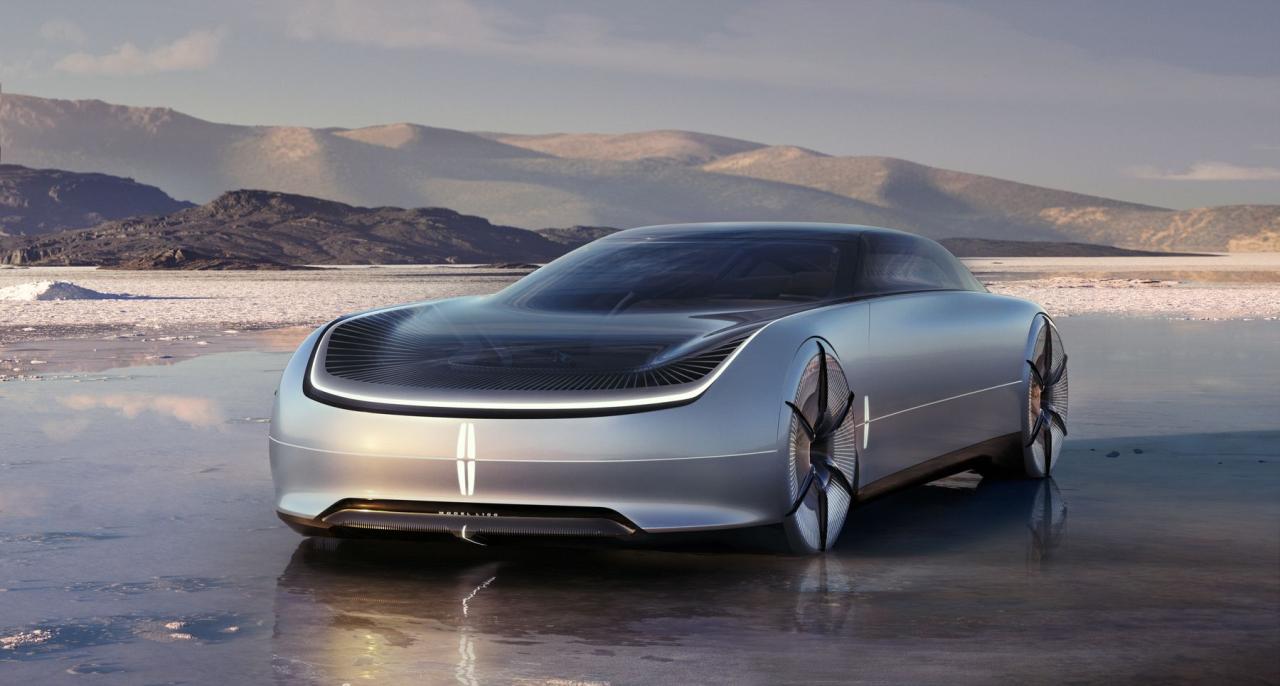
These foundational technologies are converging to create distinct and exciting new driving (and riding) experiences.
A. The “Intelligent Co-Pilot” Experience (ADAS++)
For the foreseeable future, humans will remain actively involved in driving, but with increasingly sophisticated assistance.
- Proactive Safety Networks: V2V communication will provide warnings about hazards beyond the driver’s line of sight (e.g., sudden braking around a bend, vehicle approaching a blind intersection).
- Adaptive Driving Coaches: AI systems offering real-time feedback and suggestions to optimize fuel efficiency, driving smoothness, or even providing “gamified” challenges to improve driving skills.
- Dynamic Road Condition Alerts: Vehicles sharing data about slippery patches, potholes, or heavy rain, allowing real-time route adjustments and proactive safety measures.
- Context-Aware Navigation: Navigation systems that not only find the fastest route but also consider current weather, driver preferences (e.g., scenic route, avoid tolls), and even energy consumption for EVs.
- Personalized Driver Profiles: The car automatically adjusts seat, mirror, climate, and infotainment settings based on biometric recognition or smartphone pairing upon entry.
This experience enhances human driving with intelligent, non-intrusive assistance.
B. The “Digital Lounge” (Autonomous Ride)
When autonomous capabilities reach higher levels, the interior becomes a flexible, multi-functional space.
- Reconfigurable Seating and Interior Layouts: Seats can swivel, recline, or slide to create conversational areas, individual work pods, or comfortable sleeping arrangements.
- Immersive Entertainment and Productivity Hubs: Large screens for movies, gaming, video conferencing, or detailed work. Integrated high-fidelity audio and personalized climate zones.
- “De-stress” Environments: Cabins designed with ambient lighting, soothing sounds, and even integrated massage functions to help occupants relax or de-stress during commutes.
- Mobile Meeting Rooms/Offices: Connectivity and interior flexibility turn the car into a productive mobile workspace, complete with video conferencing capabilities.
- Transparent Cockpit: Future designs might use augmented reality on windows to display information or virtually “remove” pillars for a panoramic view, even while maintaining safety.
- Seamless Transitions: Intuitive alerts and clear procedures for when the vehicle needs human intervention, ensuring a smooth and safe handover.
This experience transforms commute time into valuable personal or professional time.
C. The “Shared Mobility Ecosystem” Experience
The rise of Mobility-as-a-Service (MaaS) and shared autonomous fleets will redefine car ownership.
- On-Demand Access: Summoning an autonomous (or human-driven) electric vehicle via an app, with the car arriving precisely when and where needed, eliminating parking and maintenance concerns.
- Personalized Profiles in Shared Vehicles: Even in a shared vehicle, the cabin settings (temperature, music, seat position) adjust automatically based on the user’s saved profile, creating a personalized experience in a pooled resource.
- Multi-Modal Journey Planning: Apps that seamlessly integrate various transport options – autonomous ride-shares, public transit, e-scooters, bike-sharing – into a single, optimized journey, with one payment system.
- Reduced Urban Congestion: Optimized routing and high vehicle utilization of shared fleets significantly reduce the number of vehicles on the road and the need for parking.
- Subscription-Based Mobility: Paying a monthly fee for access to a range of mobility services, rather than outright vehicle ownership, offering financial predictability and flexibility.
This experience prioritizes access over ownership, aiming for efficiency and urban livability.
D. The “Immersive Adventure” Experience (Off-Road/Recreational)
Even in performance and off-road segments, technology will enhance the driving experience.
- AI-Enhanced Off-Roading: Systems that use sensors and AI to analyze terrain in real-time, automatically adjusting suspension, torque delivery, and traction control for optimal grip and capability.
- Predictive Performance: AI assisting drivers on race tracks by suggesting optimal lines, braking points, and gear selections, or providing real-time telemetry to improve skills.
- Immersive Displays: Panoramic screens displaying real-time camera views of the terrain (e.g., “transparent hood” views), augmented with navigation overlays or gradient indicators.
- Portable Power: EVs with massive battery packs acting as mobile power sources for camping gear, tools, or even powering a remote cabin.
- Advanced Connectivity in Remote Areas: Satellite connectivity or robust mesh networks ensuring communication even in areas without traditional cellular service for safety and entertainment.
Technology will make extreme adventures safer, more accessible, and more exhilarating.
Challenges and Opportunities
The journey to these transformative driving experiences is complex, fraught with challenges but also immense opportunities.
A. Cybersecurity and Data Privacy
The highly connected and data-rich nature of future vehicles creates significant vulnerabilities.
- Threat Surface Expansion: Every connected feature is a potential entry point for cyberattacks, which could compromise safety, data, or vehicle control.
- Data Volume and Sensitivity: Vehicles will collect vast amounts of personal, biometric, and location data, raising concerns about privacy and potential misuse.
- Secure OTA Updates: Ensuring that remote software updates are tamper-proof and cannot be exploited for malicious purposes.
- Ethical Data Use: Establishing clear ethical guidelines and regulations for how vehicle data is collected, stored, shared, and monetized.
Robust security protocols and transparent data governance are paramount for building public trust.
B. Regulatory and Legal Frameworks
Existing laws were ill-equipped for the complexities of autonomous, connected, and AI-driven mobility.
- Liability: Determining who is liable in the event of an accident involving an autonomous or highly assisted vehicle – the driver, manufacturer, software provider, or infrastructure owner?
- Standardization: Developing universal standards for V2X communication, data formats, and ethical AI in mobility systems across different jurisdictions.
- Ethical Decision-Making: Programming vehicles to make complex ethical decisions in unavoidable accident scenarios (e.g., “trolley problem”).
- Data Ownership and Access: Clear legal definitions of data ownership, access rights, and sharing protocols.
- International Harmonization: Ensuring consistency in regulations across countries to enable seamless global mobility.
Adaptive and forward-looking legal frameworks are essential for unlocking the full potential of future driving experiences.
C. Infrastructure Readiness
The physical and digital infrastructure must evolve to support these new experiences.
- EV Charging Infrastructure: A ubiquitous and high-power charging network is crucial for mass EV adoption and seamless long-distance travel.
- 5G Connectivity: Widespread deployment of high-bandwidth, low-latency 5G networks is vital for V2X communication and real-time data exchange for autonomous systems.
- Smart Road Infrastructure: Roads equipped with sensors, communication units, and intelligent traffic management systems to interact with connected vehicles.
- Cyber-Physical Security: Protecting not just the vehicles but also the underlying infrastructure from cyber threats.
- Urban Reconfiguration: Cities will need to adapt their layout to accommodate shared autonomous fleets, micro-mobility, and reduced parking demand.
Investing in smart and resilient infrastructure is a massive undertaking.
D. Public Acceptance and Trust
Building confidence and overcoming skepticism among the general public is crucial for widespread adoption.
- Safety Concerns: Addressing fears about autonomous vehicle safety through rigorous testing, transparent communication, and a proven track record.
- Job Displacement: Managing the societal impact of automation on traditional driving roles (e.g., truck drivers, taxi drivers) through retraining and new job creation.
- Control vs. Convenience: Balancing the desire for traditional driving control with the convenience and safety offered by autonomous features.
- Understanding New Technology: Educating consumers about how new features work, their limitations, and how to interact with them safely and effectively.
- Cost vs. Benefit: Demonstrating the long-term value and benefits to consumers despite potentially higher upfront costs or subscription fees.
Effective communication, education, and positive real-world experiences are key to fostering public acceptance.
E. Business Model Transformation
The shift will fundamentally change how vehicles are bought, sold, and used.
- From Product to Service: Transitioning from selling cars as a product to offering “mobility as a service,” with subscription models and on-demand access.
- New Revenue Streams: Monetizing data, selling new features via OTA updates, and providing premium in-car services.
- Manufacturing Adaptation: Reconfiguring factories for electric and potentially modular vehicle production.
- Talent Acquisition: Shifting from traditional mechanical engineering to a strong focus on software, AI, and electrical engineering.
- Competition from Tech Giants: Traditional automakers facing increased competition from tech companies entering the mobility space.
Navigating this business model transformation requires significant strategic agility and investment.
Conclusion
The future driving experiences are poised to be nothing short of revolutionary, fundamentally transforming our relationship with vehicles and the very act of travel. Driven by the powerful forces of electrification, the relentless march of autonomous technology, pervasive connectivity, and sophisticated AI, the car is evolving into an intelligent, adaptive, and highly personalized mobile space. While significant challenges loom in cybersecurity, regulation, and public acceptance, the commitment from innovators across the globe signals an unstoppable momentum. This isn’t just about moving from point A to point B more efficiently; it’s about creating cleaner cities, safer roads, and a more accessible, convenient, and immersive way for everyone to navigate the world. The era of passive transportation is giving way to an active, intelligent journey, and the future of driving promises to be a thrilling, unprecedented ride.

